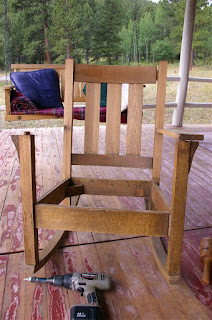Posts
Showing posts from September, 2011
Historic Preservation Work at Rocky Mountain National Park
- Get link
- Other Apps
Gluing the Back on a Soprano Ukulele
- Get link
- Other Apps
Restoring a Craftsman Style Rocking Chair, Part 1
- Get link
- Other Apps


